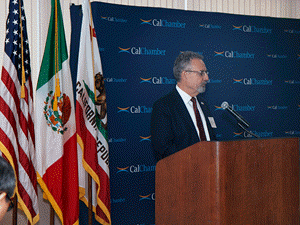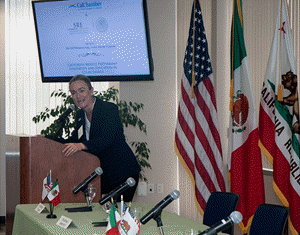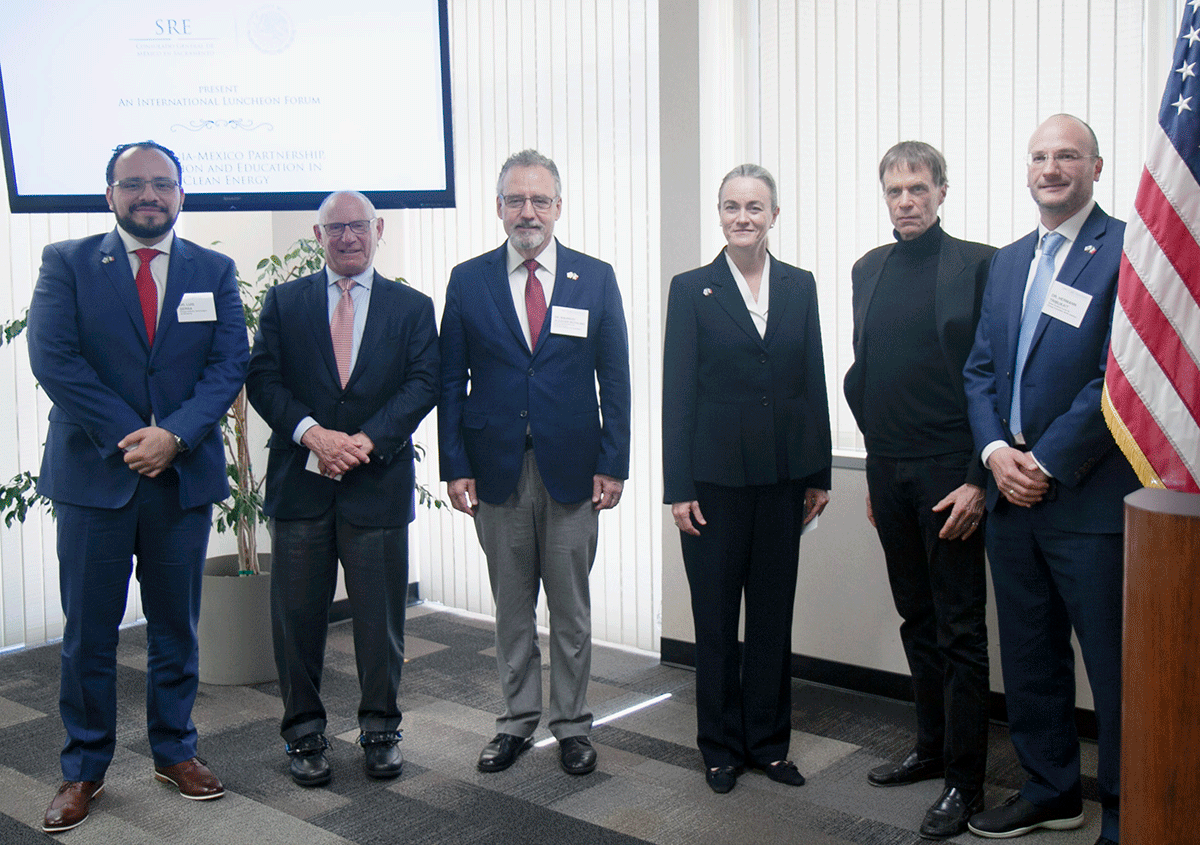 Energy projects that are helping foster innovations in California and Mexico were highlighted this week at an international luncheon forum co-hosted by the California Chamber of Commerce and the Consulate General of México of Sacramento for nearly 100 guests.
Energy projects that are helping foster innovations in California and Mexico were highlighted this week at an international luncheon forum co-hosted by the California Chamber of Commerce and the Consulate General of México of Sacramento for nearly 100 guests.
The May 1 luncheon was part of the Ninth Annual California Mexico Advocacy Day, which works to increase the relevance of Mexico’s relationship with the United States and the State of California.
Serving as moderator for the session was Dr. Hermann Tribukait, representative of Sener-Conacyt Funds for Energy Innovation in North America. Play Video
The featured panelists were:

- Dr. Michael Siminovitch, director, California Lighting Technology Center at the University of California, Davis;
- Dr. Mauricio Alcocer Ruthling, director of the Center for Sustainability and Renewable Energy at the Universidad Autónoma de Guadalajara; and
- Dr. Luis Serra, executive director, Energy Initiative at Tecnológico de Monterrey.
UC Davis Lighting Center
Siminovitch gave an overview of the lighting center’s efforts to support collaboration among representatives from private industry, public agencies and utilities. Play Video
The center began with the idea that the commercial sector needed to be involved from Day 1 for the center to succeed in translating research results into practical results, Siminovitch said.
One beneficiary of the center’s research, he noted, is the UC Davis campus, which is in the process of changing every single lighting system. Ultimately, the changes will yield 70% savings on the cost of exterior lighting, he said.
Guadalajara Center

Alcocer said the Center for Sustainability and Renewable Energy at the Universidad Autónoma de Guadalajara hopes to help people prepare to work in the lighting field and to be a part of developing standards for Mexico. Play Video
The center has a four-year timetable for its activities, which also will include applied research in lighting, tecnology transfer and creating collaborative relationships with government and industry, he said.
The impacts of the center’s programs, Alcocer reported, will include reduced carbon emissions from use of energy-efficient lighting systems; scientific publications resulting from multidisciplinary research; healthier environments in workplaces, schools, health care institutions and homes due to optimal lighting; creation of energy-efficient prototypes for lighting systems; and reduced costs for lighting systems.
Monterrey Energy Initiative

Serra quickly recapped the activities of the Energy Initiative at Tecnológico de Monterrey in infrastructure, research, training and certification of lighting workers. Play Video
The training and certification programs have been very successful, he said, noting that the Monterrey initiative has created numerous massive open online courses (MOOCs).
The goal of the certification program, Serra said, was to get 450 workers certified for 10 labor skills. In actuality, the program was able to train more than 10 times that number—5,200 workers in two years.
One of the key components of the national lab, he explained, was deciding that the MOOCs would not be that specialized.
Now that the Mexico energy sector is open, he added, there will be an opportunity to look at integrating energy markets for all of North America.
Closing Comments

Asked by Tribukait to summarize how to extend the knowledge gained to other areas, Siminovitch commented: “This is about culture change and cultural evolution.” Once the “culture of collaboration” is created, that collaborative model developed through the lighting center projects can be applied to other building trades, he said.
Alcocer said the center in Guadalajara aims to create awareness among people about the relationship they have with energy, and the consequences of how they use lighting.
Referring to his earlier comment on the “whole ocean of opportunity” that has opened along with Mexico’s energy market, Serra joked that his Twitter summary would be “hashtag we want it in Monterrey.”
Consul General Liliana Ferrer pointed out that 20 California companies already are involved in renewable energy projects in Mexico.
For more information, see the CalChamber portal page on Mexico. Q&A Video

Staff Contact: Susanne T. Stirling

